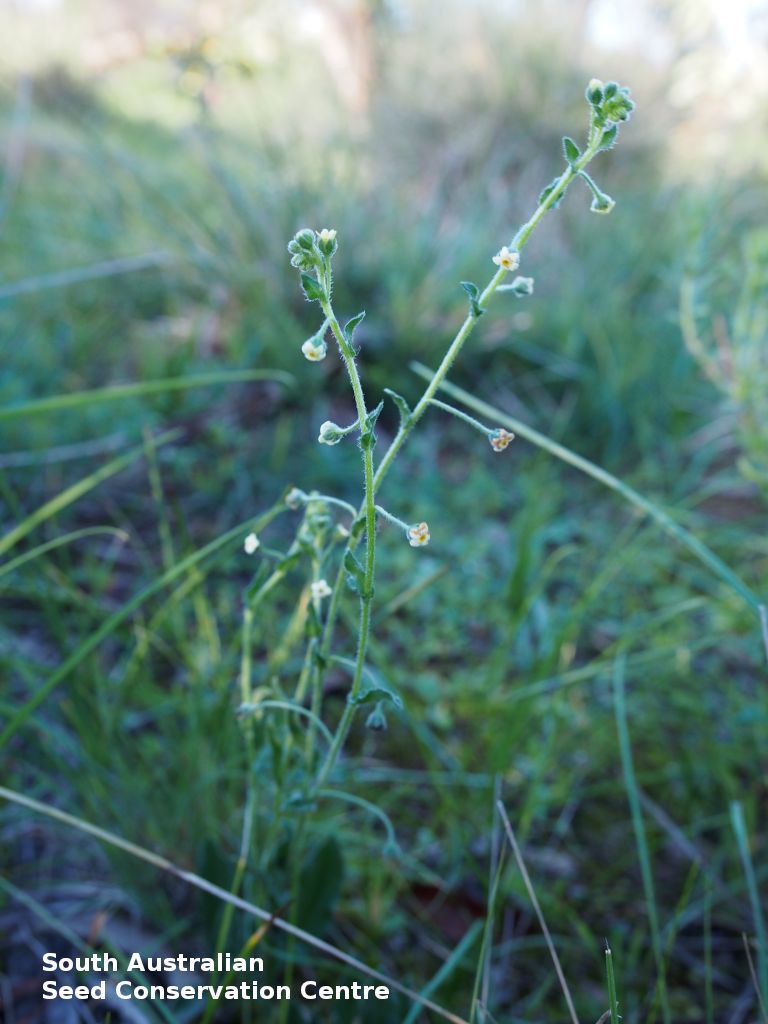














Prior names
Cynoglossum suaveolens
Common names
Sweet Hound's Tongue
Sweet Forget-me-not
Etymology
Cynoglossum from the Greek 'kynos' meaning a dog and 'glossa' meaning a tongue, alluding to the shape of the leaves. Suaveolens from the Latin 'suave' meaning sweet, alluding to the sweet-smelling fragrance of its flowers.
Distribution and status
Found in the southern part of South Australia, growing in moist places in open-forests and woodlands. Also found in Queensland, New South Wales, Victoria and Tasmania. Native. Common in South Australia. Common in the other States.
Herbarium regions: Flinders Ranges, Eyre Peninsula, Northern Lofty, Yorke Peninsula, Southern Lofty, South Eastern, Green Adelaide
NRM regions: Adelaide and Mount Lofty Ranges, Eyre Peninsula, Northern and Yorke, South East
AVH map: SA distribution map (external link)
Plant description
Perennials herb to 40 cm high with one to few erect stems from the basal rosette, with a tap root, covered with spreading to appressed hairs. Leaves densely clustered; oblanceolate, subpetiolate but with a broadened sheath in the basal rosette becoming widely spaced; lanceolate and sessile below the inflorescence to 15 cm long and 1.8 cm wide; pointed, often with undulate margins. Flower-spike terminal with pedicellate funnel-shaped, blue flowers. Flowering between September to January. Fruits are brown fruit cluster with upto four seeds hanging along fruiting spike. Seeds are brown globose seed to 4 mm long and 4 mm wide covered in barbed spines to half of the surface. Seed embryo type is spatulate fully developed.
Seed collection and propagation
Collect seeds between November and February. Collect maturing fruits, those turning brown and contain a hard seed inside, by running your hands along the fruiting spike or break off the whole spike. Wear gloves as fruits can be prickly. Place the seeds/spikes in a tray and leave to dry for two weeks. No further cleaning is required if only seed collected. If seed spikes collected, use hand to strip off the mature seeds. Store the seeds with a desiccant such as dried silica beads or dry rice, in an air tight container in a cool and dry place. Seeds are non-dormant, viable seed should germinate readily.